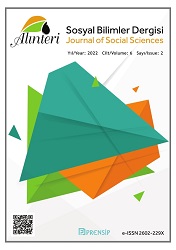Memlüklerde Levirat Evlilikler
Levirate Marriages in the Mameluks
Author(s): Kader Altin, Elif KömürcüSubject(s): Customs / Folklore, Ethnohistory, Gender history, Sociology of Culture
Published by: Kastamonu Üniversitesi
Keywords: Family; History; Levirat; Mameluke; Marriage;
Summary/Abstract: The concept of “levirate” is the name given to the tradition of a woman whose husband dies, marrying one of her husband’s remaining male relatives in its broadest sense. There are many components shaping the cultural context that feeds the levirate, but the most important is the secondary sphere in which women are positioned. Women are considered as property of men within this sphere. The house chosen by the wife is the house of the husband. However, the way to gain a legitimate position in that house is to maintain the role of an active bride. The key to this legitimate continuity is the levirate. Since widowed women do not initiate a legal claim process under oral law, it has become even more difficult to stop the process leading to the levirate because the custody of the man’s family is accepted as legitimate in traditional culture. Levirate marriages constitute a policy of the Turkic States, and they have enabled them to become a dominant/power in the region by establishing kinships. Because, the woman to be married was chosen to serve a political interest in previous Turkic States. The deterioration of the state order was prevented after the death of a husband, the woman was not allowed to return to her own family, and the state order was maintained by remarrying from within the dynasty. The present study, the practice of levirate, which is one of the forms of marriage that finds application in traditional societies, focused on the nine levirate marriages of the ruling class in the Mameluke State, revealed that, unlike the levirate marriages in Turkish political life before, the marriages were not made on the basis of establishing a political bond.
Journal: Alınteri Sosyal Bilimler Dergisi
- Issue Year: 6/2022
- Issue No: 2
- Page Range: 161-169
- Page Count: 9
- Language: Turkish

